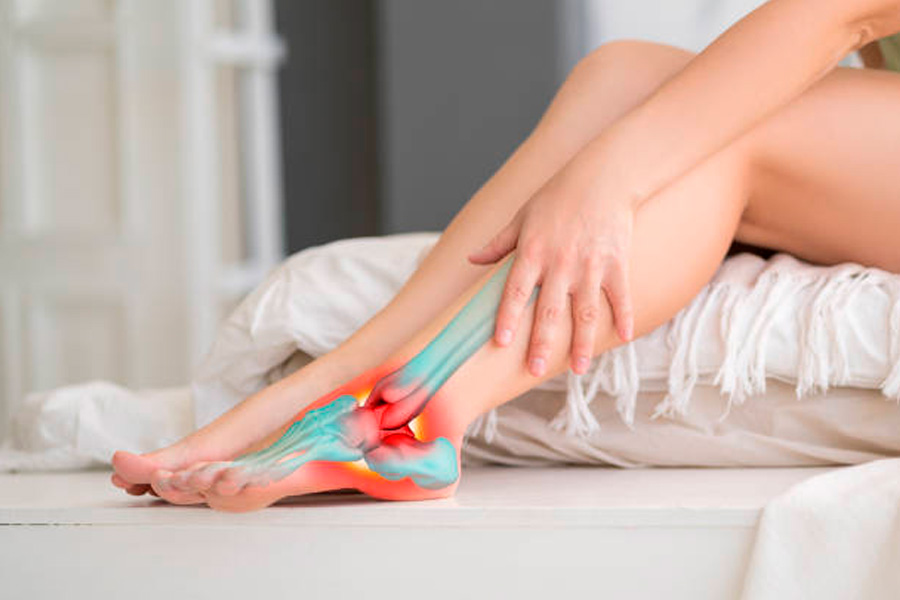
Peroneal tendonitis is a condition that causes foot and leg pain due to the peroneal tendons becoming inflamed. These tendons are located on the outside of the ankle and help stabilize the foot and lower leg. Peroneal tendonitis can be caused by overuse, injury, or repetitive stress to the area. Symptoms include pain and tenderness around the ankle, as well as swelling, stiffness, and weakness in the affected leg.
Exercise is an important part of treating peroneal tendonitis. It helps to strengthen the muscles and tendons around the ankle, which can also help prevent further injury. Additionally, exercise can increase blood flow to the area, which assists in speeding up healing.
6 Exercises For Peroneal Tendonitis Healing and Relief
- Heel raises: Heel raises are a great way to stretch and strengthen the peroneal tendon, which can help prevent or treat peroneal tendonitis. To do a heel raise, stand with your feet shoulder-width apart and hold onto a sturdy object for balance. Slowly raise your heels until you are standing on your toes, then lower them back down to the starting position. Repeat 10-15 times.
- Toe raises: Toe raises are exercises that can help improve the symptoms of peroneal tendonitis. To do this exercise, stand with your feet hip-width apart and go up onto your toes. Hold this position for a few seconds before lowering back down. Repeat at least 10 times.
- Calf stretches: Calf stretches for peroneal tendonitis can help reduce pain and inflammation in the tendons. Stand with both feet flat on the ground. Step forward with one leg and bend that knee while keeping the other leg straight behind you with the heel touching the ground – hold for 30 seconds before switching legs and repeating on the other side. You can also do this stretch by holding onto a railing or doorframe for balance assistance.
- Wall-supported ankle dorsiflexion: This exercise helps stretch and strengthen the muscles and tendons around the ankle and is performed by standing with your back against the wall. Keep your back and hips against the wall and keep your feet away from the wall. Then, bring your toes up. Balance yourself on the balls of your feet and keep your knees straight. You should feel a stretch in your calf and ankle. Hold this position for at least 15 seconds before going back to the start. Repeat the exercise five times.
- Seated plantar fascia stretch: This stretch helps to lengthen the plantar fascia, which in turn takes pressure off the peroneal tendon. Sit in a chair with your feet flat on the floor and your legs parallel to each other. Place a rolled-up towel under your right ankle, and grab hold of the ends of the towel with both hands. Gently pull on the towel while keeping your leg straight, until you feel a stretch in your arch and calf muscle. Hold for 15 to 30 seconds, then repeat with the left leg.
- Eccentric calf strengthening exercises: These exercises focus on the downward portion of a calf raise, which helps reduce tendon pain. Start by standing on a raised surface with your feet hip-width apart. Keeping your left leg straight, raise your right heel so that you are standing on your toes. Lower your right heel below the level of the raised surface and hold for 2 seconds before returning to the starting position. Repeat 10 times before switching legs and repeating with the left leg.
These exercises are great for mild to moderate peroneal tenonitis. However, if your symptoms persist, or if you want an expert to help you avoid this painful injury, consult a podiatrist who specializes in foot and ankle treatments.
Peroneal Tendonitis Treatment in Cincinnati, OH
The podiatrists at Cincinnati Foot & Ankle Care are highly experienced in treating patients with peroneal tendonitis. We typically combine different treatment methods to help achieve the best outcomes for our patients. As the largest podiatry practice in Cincinnati, we have a wealth of experience that can’t be matched. You can trust that us with your foot health. To schedule an appointment with one of our foot and ankle doctors, call our podiatry office nearest you or use our convenient online request form.




